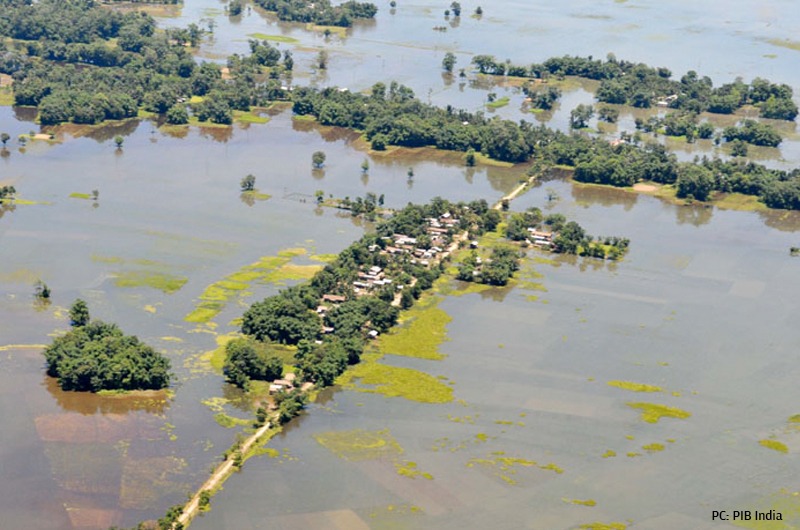This year the monsoon has taken a huge tool over the daily business in Assam, throwing life out of gear and costing nearly 79 lives and displacing over 2,678 inhabitants. The monsoon in North-Eastern Indian and adjacent states like Bihar as well as neighboring countries such as Nepal and Bangladesh is annually accompanied by floods due to the overspilling of the Brahmaputra river. This year’s floods have claimed nearly 117 lives in Nepal and around 69 people are reported dead in Bangladesh, with another 2.6 million being displaced.
In Assam’s Kaziranga National Park and Tiger Reserve (KNPTR), as many as 60 animals have perished till now due to drowning. The number includes 36 hog deer, 8 rhinos, 3 wild buffalo, 1 python, 7 wild boar, 2 swamp deer, 1 Sambar and two porcupines. Another cause of death apart from drowning is the corollary accidents that have resulted in the death of 15 hog deers that were hit by vehicles in their attempt to escape the floods.
The floods lead to an escalation of human-wildlife conflict as the animals try to enter the nearby villages in order to find higher elevation places to escape the flooding plains. Bibhab Talukdar, founder of Aaranyak, a wildlife NGO informed, “When there’s frequent flooding, the animals don’t get enough time to recover. They are usually exhausted easily and hungry as well. Since the animals move towards higher locations in Karbi Anglong after crossing NH37, it is very crucial to protect that area from human intervention.” As per the KNPTR bulletin, the floods have caused injuries to about 51 animals and one had been hit by a speeding vehicle.
On Sunday, the park authorities confirmed via a bulletin that estimably 85% (equivalent to over 430 sq km) of the park area has been submerged. Kaziranga park is a Unesco World Heritage site, and houses at least 2,400 one-horned rhinos, the largest population of one-horned rhinos in the world. Listed as Vulnerable on the IUCN Red List, the Indian one-horned Rhinoceros faces “high risk of extinction in the wild” as per the WWF.
As many as 9 greater one-horned rhinos have died since the floods, including one rhino that died a natural death last month. The latest cadaver of a female rhino who had died due to drowning was discovered on Saturday. On the same day an adult male rhino was rescued by the authorities from NH37.
The director of KNPTR, P Sivakumar said, “the animal was very exhausted as it was in water for 3-4 day and we were planning to shift it to the state zoo in Guwahati. But after resting for several hours it moved back inside. We are keeping a watch on it.” A female rhino calf who was separate from her mother, was also rescued by the officials earlier this week. She is currently kept at the Centre for Wildlife Rehabilitation and Conservation (CWRC), located near the park. Nearly 18 rhinos had died in the floods last year.









